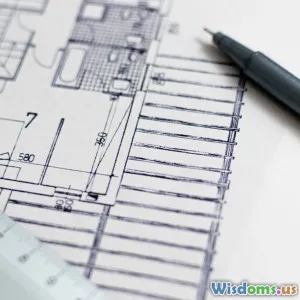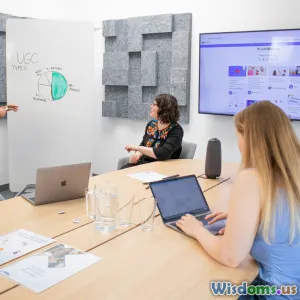
Urban Design for Diverse Populations
8 min read Explore how urban design can foster inclusive, vibrant cities by addressing the needs of diverse populations. (0 Reviews)
Urban Design for Diverse Populations: Crafting Cities that Embrace Everyone
Urban design is not merely about constructing buildings and designing streets; it’s about crafting environments that resonate with the diverse tapestry of human experiences and identities. As cities around the world become increasingly multicultural and socially complex, the necessity to rethink urban spaces to serve varied communities is urgent and profound.
The Premise: Why Diverse Populations Need Inclusive Urban Design
Cities are powerful spaces where culture, economics, and social life intersect. Today’s urban populations are marked by significant diversity in age, ethnicity, ability, socioeconomic status, and lifestyle. According to the United Nations, by 2030, 60% of the world population is projected to live in urban areas—many cities will be ethnically and culturally heterogeneous more than ever before.
Traditional urban design often falls short of inclusivity, lacking adaptability to different mobility needs, cultural habits, or social interactions. Marginalized groups—such as persons with disabilities, elderly residents, immigrants, and economically disadvantaged communities—tend to experience spatial exclusion manifesting as limited access to public spaces, segregated neighborhoods, or inadequate community facilities.
Dr. Jane Jacobs, an influential urbanist, famously said, “Cities have the capability of providing something for everybody, only because, and only when, they are created by everybody.” This underscores the importance of participatory and equitable approaches in urban development.
Principles of Urban Design for Diverse Populations
1. Universal Accessibility
Accessibility transcends wheelchair ramps. It involves creating environments usable by all individuals, regardless of age, ability, or circumstance. This includes tactile paving for the visually impaired, clear signage, sufficient seating areas, and barrier-free paths.
Example: The city of Curitiba in Brazil excels in universal design by integrating accessible bus rapid transit with pedestrian-friendly walkways, ensuring mobility for the elderly and disabled.
2. Cultural Sensitivity
Urban design should acknowledge and respect the cultural traditions and spatial needs of various communities. This means including flexible spaces for festivals, prayer, markets, and social gatherings.
Example: In Singapore’s Chinatown, urban planners preserved traditional shophouses and community centers, enabling residents to maintain their cultural heritage while enjoying modern urban amenities.
3. Socioeconomic Inclusivity
Affordable housing, mixed-use developments, and accessible public amenities ensure that different income groups can coexist in vibrant neighborhoods, reducing segregation.
Real-World Insight: Vienna is renowned for its social housing model, where about 60% of residents live in government-subsidized homes interspersed with private housing, fostering social cohesion and economic diversity.
4. Participatory Planning
Including community voices in the design process ensures that urban spaces reflect the real needs and aspirations of their users. This collaborative approach can reduce planning errors and maximize user satisfaction.
Case Study: The participatory design of the Medellín Metrocable in Colombia engaged local communities, significantly improving connectivity and social integration across previously marginalized barrios.
Key Challenges Faced in Designing for Diversity
Spatial Segregation and Gentrification
Booming urban development sometimes leads to gentrification, displacing vulnerable populations. Balancing urban regeneration with social equity requires policies that protect affordable housing and support inclusive economies.
Balancing Competing Needs
Children, elderly, commuters, residents, and business owners all have different urban demands. Smart, flexible design solutions—like adjustable street furniture, multi-use spaces, and dynamic event programming—help accommodate varying interests.
Infrastructure and Resource Constraints
Implementing universal accessibility or community spaces can strain budgets, particularly in resource-limited cities. Leveraging innovative technologies and interdisciplinary collaboration can help bridge these gaps.
Innovations and Best Practices Shaping Inclusive Urban Design
Smart Cities and Technology
Integrating technology can promote inclusiveness. For example, sensor-enabled infrastructure can assist navigation for visually impaired people, and mobile apps can help non-native speakers access city services.
Green and Public Spaces
Parks and plazas serve as communal living rooms that foster social interaction and inclusivity. Designing these spaces with inputs from diverse groups ensures they meet broad recreational, cultural, and social needs.
Example: New York City’s High Line transformed an abandoned rail line into an accessible elevated park, drawing a broad demographic and revitalizing adjacent neighborhoods.
Multimodal Transit Solutions
Public transit systems designed with varied users in mind improve city-wide accessibility, connecting economically or socially isolated residents to wider opportunities.
Insight: The Dutch city of Amsterdam’s extensive network of bike lanes and waterways exemplifies multimodal transport serving different population segments, including tourists, commuters, and those with limited mobility.
Call to Action: Designing the Future Cities Together
Urban design for diverse populations is an evolving practice demanding commitment from architects, planners, policymakers, and communities alike. Every city has unique challenges and cultural narratives, but the common thread is embracing diversity as a source of strength—not a problem to be solved.
By prioritizing inclusive, accessible, and participatory approaches, cities can become arenas where every individual, regardless of background or ability, experiences dignity, opportunity, and belonging.
As citizens and professionals, staying informed, advocating for equitable policies, and valuing diversity in urban contexts will shape thriving metropolitan futures where everyone feels at home.
"The test of city design is how it serves its most vulnerable inhabitants." — Jan Gehl, Urban Designer
References
- United Nations, World Urbanization Prospects, 2018 Revision
- Gehl, J. (2010). Cities for People.
- Calthorpe, P. (2011). Urbanism in the Age of Climate Change.
- Jacobs, J. (1961). The Death and Life of Great American Cities.
- City of Curitiba Official Urban Planning Documents
- Vienna Social Housing and Urban Development Reports
Rate the Post
User Reviews
Popular Posts





















